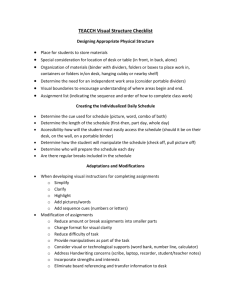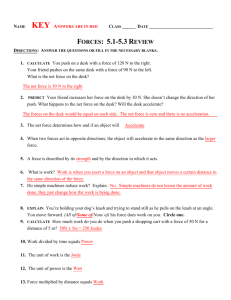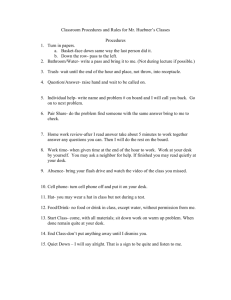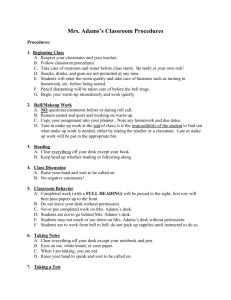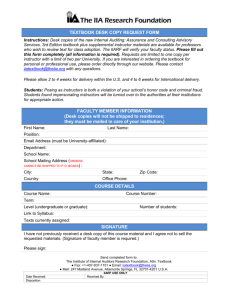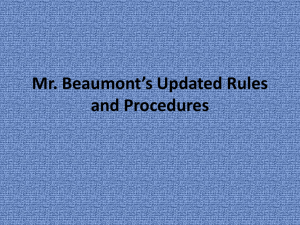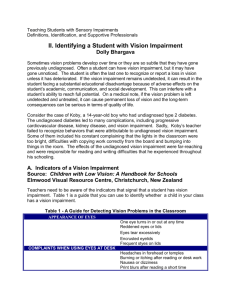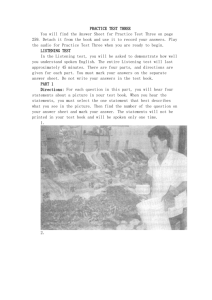Observable Cues to Classroom Vision Problems
advertisement
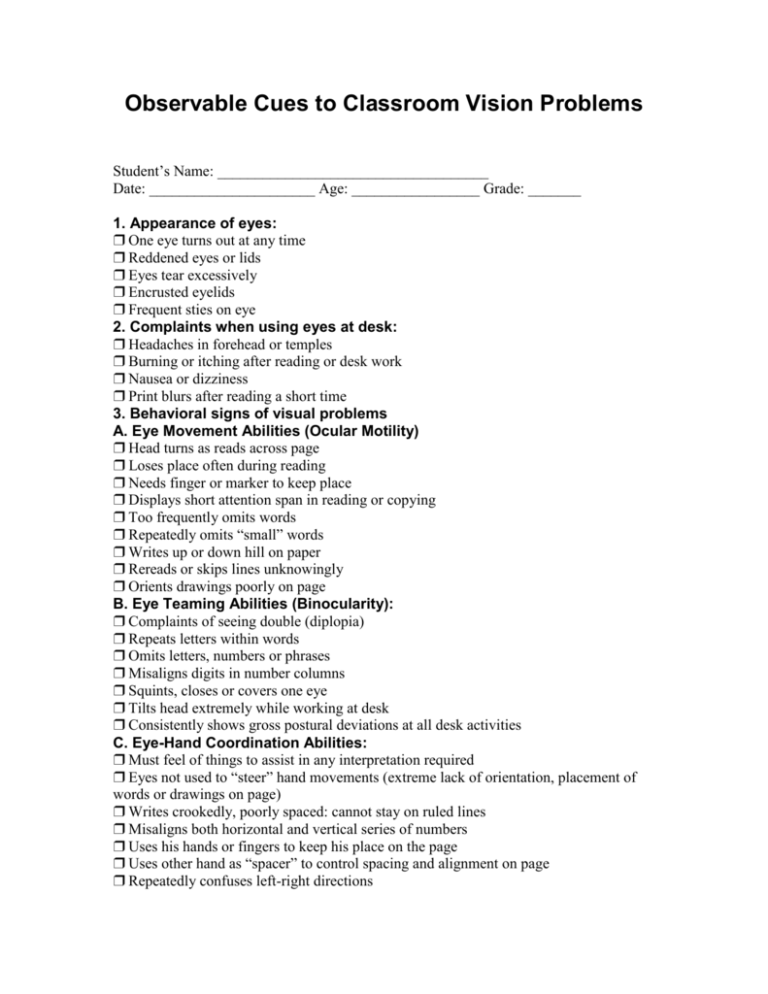
Observable Cues to Classroom Vision Problems Student’s Name: ____________________________________ Date: ______________________ Age: _________________ Grade: _______ 1. Appearance of eyes: ❒ One eye turns out at any time ❒ Reddened eyes or lids ❒ Eyes tear excessively ❒ Encrusted eyelids ❒ Frequent sties on eye 2. Complaints when using eyes at desk: ❒ Headaches in forehead or temples ❒ Burning or itching after reading or desk work ❒ Nausea or dizziness ❒ Print blurs after reading a short time 3. Behavioral signs of visual problems A. Eye Movement Abilities (Ocular Motility) ❒ Head turns as reads across page ❒ Loses place often during reading ❒ Needs finger or marker to keep place ❒ Displays short attention span in reading or copying ❒ Too frequently omits words ❒ Repeatedly omits “small” words ❒ Writes up or down hill on paper ❒ Rereads or skips lines unknowingly ❒ Orients drawings poorly on page B. Eye Teaming Abilities (Binocularity): ❒ Complaints of seeing double (diplopia) ❒ Repeats letters within words ❒ Omits letters, numbers or phrases ❒ Misaligns digits in number columns ❒ Squints, closes or covers one eye ❒ Tilts head extremely while working at desk ❒ Consistently shows gross postural deviations at all desk activities C. Eye-Hand Coordination Abilities: ❒ Must feel of things to assist in any interpretation required ❒ Eyes not used to “steer” hand movements (extreme lack of orientation, placement of words or drawings on page) ❒ Writes crookedly, poorly spaced: cannot stay on ruled lines ❒ Misaligns both horizontal and vertical series of numbers ❒ Uses his hands or fingers to keep his place on the page ❒ Uses other hand as “spacer” to control spacing and alignment on page ❒ Repeatedly confuses left-right directions D. Visual Form Perception (Visual Comparison, Visual Imagery, Visualization): ❒ Mistakes words with same or similar beginnings ❒ Fails to recognize same word in next sentence ❒ Reverses letters and/or words in writing and copying ❒ Confuses likenesses and minor differences ❒ Confuses same word in same sentence ❒ Repeatedly confuses similar beginnings and endings of words ❒ Fails to visualize what is read either silently or orally ❒ Whispers to self for reinforcement while reading silently ❒ Returns to “drawing with fingers” to decide likes and differences E. Refractive Status (Nearsightedness, Farsightedness, Focus Problems, etc.): ❒ Comprehension reduces as reading continued; loses interest too quickly ❒ Mispronounces similar words as continues reading ❒ Blinks excessively at desk tasks and/or reading; not elsewhere ❒ Holds book too closely; face too close to desk surface ❒ Avoids all possible near-centered tasks ❒ Complains of discomfort in tasks that demand visual interpretation ❒ Closes or covers one eye when reading or doing desk work ❒ Makes errors in copying from reference book to notebook ❒ Squints to see chalkboard, or requests to move nearer ❒ Rubs eyes during or after short periods of visual activity ❒ Fatigues easily; blinks to make chalkboard clear up after desk task Observer’s Suggestions: Signed ____________________________________________ (circle) Teacher, Nurse, Remedial Teacher, Psychologist, Vision Consultant, Other Phone: ____________________________________________ Address: ___________________________________________ __________________________________________________ __________________________________________________
